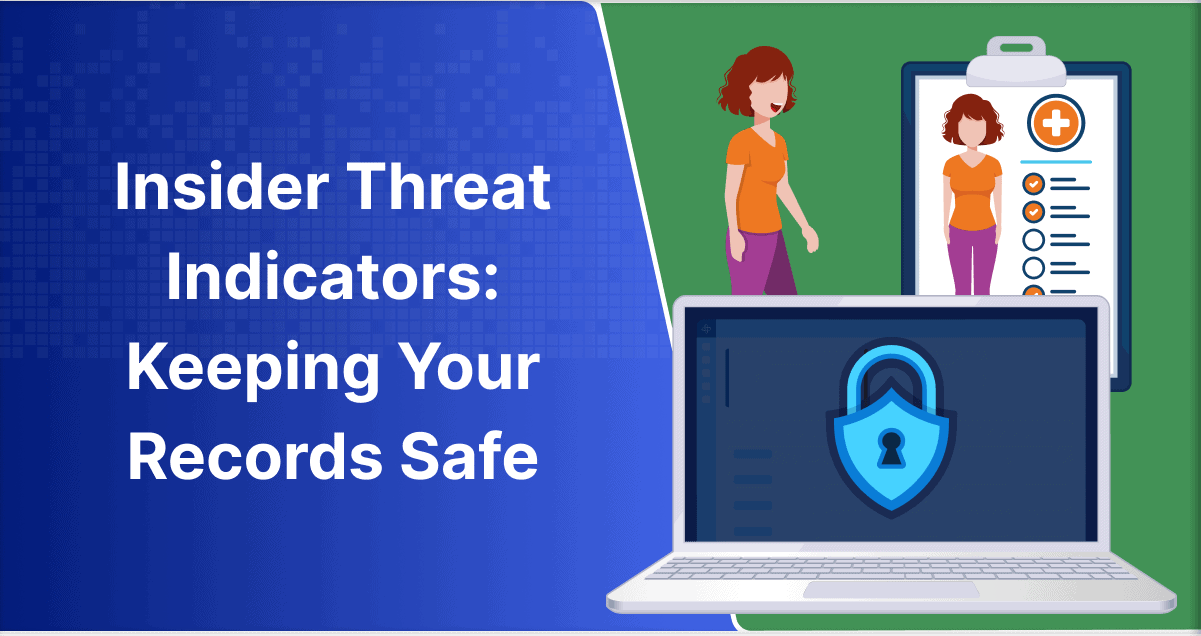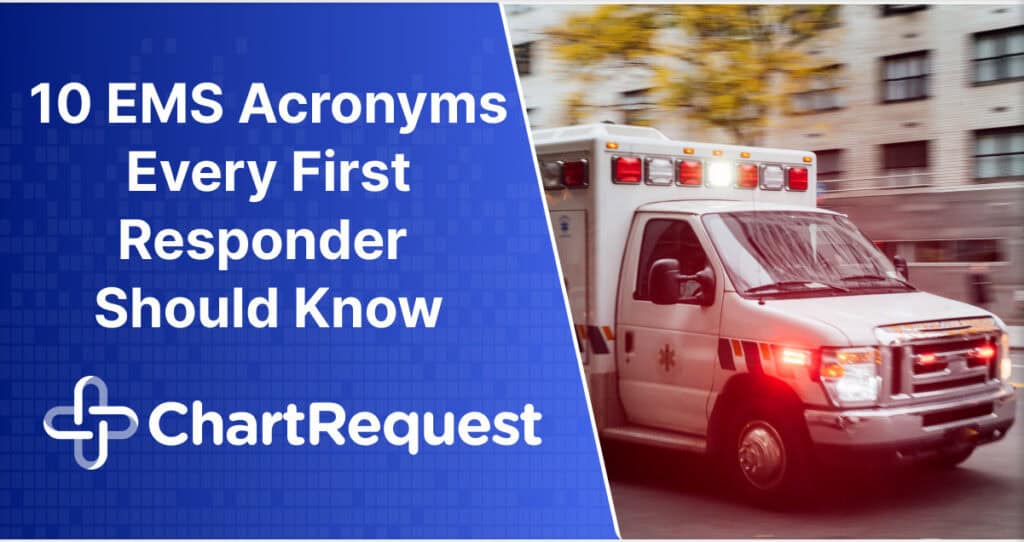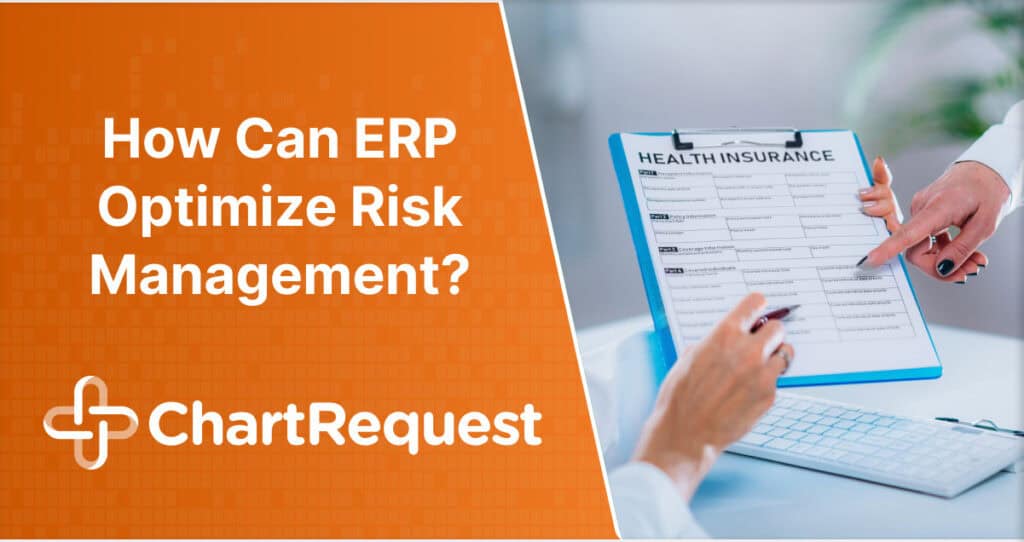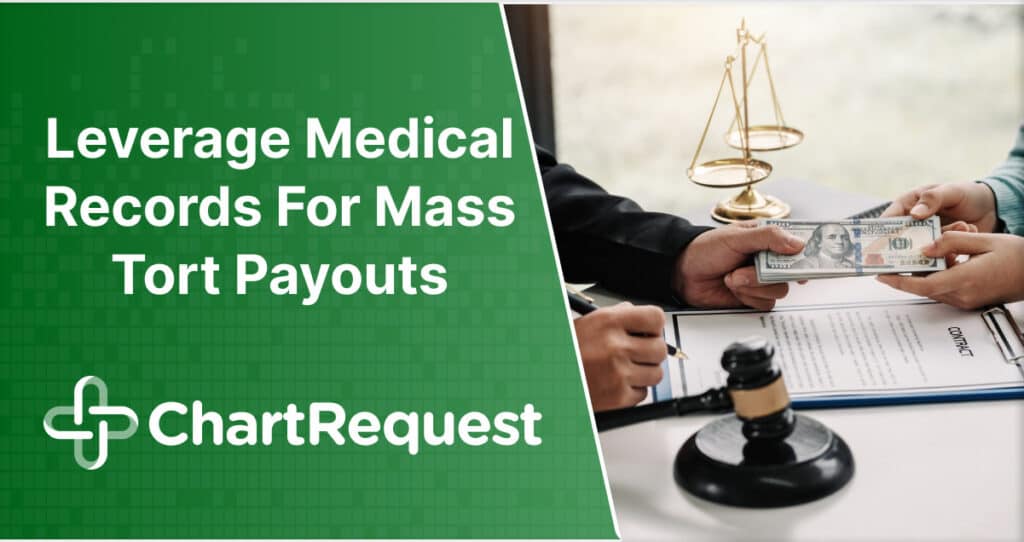What are insider threat indicators, and how can vigilance help your organization avoid costly breaches of medical records?
As a healthcare employee, you should do everything in your power to ensure that your organization has a practical and long-lasting cybersecurity framework.
Keeping your patients’ protected health information (PHI) under lock and key is an excellent way to avoid identity theft and disclosure from cybercriminals outside your facility. Still, the risk of experiencing a compliance violation or mass data leak from an insider threat is higher than ever due to inadequate training, modern technology, and poor policymaking.
Understanding prominent insider threat indicators can help your healthcare organization maintain the privacy of patient records without worry. Whether you manage your patients’ medical data in a storage room or an electronic health record (EHR), identifying and addressing internal threats is essential for the survival of your business.
At ChartRequest, we can help you protect your data year-round with comprehensive, Full-Service record exchange software and services.
Read on to learn why you should take insider threats seriously and how to prevent them with modern solutions. When you finish reading, contact us to learn how we can secure your release of information process.
What Is an Insider Threat?
Cyberattacks are an increasingly concerning threat for healthcare organizations across the globe. In 2023, IT security experts reported a 37% increase in malware attacks on businesses worldwide, resulting in nearly 78 million data breaches in the first half of the year.
Consequently, many organizations are investing in digital solutions to help reinforce their networks against attacks.
Still, mitigating external threats is just one piece of the cybersecurity puzzle. Many healthcare workers do not realize how dangerous internal threats are to their organizations.
The Cybersecurity and Infrastructure Security Agency (CISA) defines an insider threat as a person with authorized access to a network or dataset who intentionally or unintentionally compromises an organization by disclosing sensitive information. This can include PHI, passwords, and other personal data.
Insider threats have the potential to harm a healthcare company in several ways, including:
- Operational Capacity: Attacks from the inside can hinder operating procedures and technology that contribute to patient care. These problems can result in delayed treatment and staff burnout.
- Overall Security: Inside attacks expose security gaps that others may seek to exploit. Preventing these internal breaches by observing insider threat indicators optimizes privacy and security within the facility.
- Digital Infrastructure: A data breach could compromise the entire digital infrastructure of your healthcare organization. Mitigation could require extensive help from your IT department or the total replacement of critical systems.
- Employee Privacy and Safety: Insider threats can expose sensitive information about you or your coworkers. These violations can end in financially devastating lawsuits, resignations, or other setbacks.
- Patient Privacy and Safety: Patients who lose sensitive data from an insider attack may leave negative reviews on your website, significantly harming your company’s reputation. These attacks could also lead to severe HIPAA violations that your healthcare organization may be unable to recover from over time.
Who Qualifies as an “Insider”?
Insiders typically qualify as anyone in your organization or anyone who works closely with your organization. Examples include:
- Front-desk workers
- Doctors, physicians, or licensed caretakers
- Health IT personnel
- Contractors who perform administrative or operational tasks
- Record management specialists
- Janitorial staff
- Equipment suppliers and technicians
- Finance specialists
- Executive-level employees
- Software and CRM providers
- Assistants
You may think insider attacks won’t affect your company because you trust all of your coworkers, but it may be wise to rethink your optimism. Experts estimate that insider threats affect over 37% of businesses annually.
Moreover, wrongfully trusted business partners caused over a quarter of these attacks in 2020.
Are you willing to risk your company’s reputation and ability to provide quality care? The answer is likely “no,” so let’s cover some fundamental insider threat indicators that will help you identify dangers before they spiral out of control.
Types of Insider Threats
Cybersecurity experts categorize threats as generally intentional or unintentional — creating a third classification for unique circumstances. Explore these categories in more detail below:
Intentional Insider Threat Attacks
Bad actors organize intentional (or malicious) attacks to cause harm to a healthcare provider for personal or symbolic reasons.
For instance, suppose one of your coworkers has a grievance with their boss because they did not receive an expected bonus or promotion. Now, assume they release sensitive information that disrupts your operations and resigns to “get even” with your organization. This attack is both intentional and malicious — intended to create immediate or long-lasting harm.
Intentional attacks may not always be overt. Some bad actors quietly release PHI for days or weeks before tipping off security.
Generally, intentional insider attacks are persistent. Stopping these threats at the first sign of trouble is vital to prevent adverse and far-reaching consequences.
Unintentional Harm Caused By Insider Threats
What do you think when you hear the phrase cyber attack? You most likely imagine a hooded figure behind a computer screen grinning while they access your organization’s most secure spaces.
As it turns out, most insider attacks actually result from unintentional behavior and accidents during the record exchange process. Here are a couple of accidental behaviors that may result in an insider threat:
1: Negligent Behavior
Careless actions may expose your healthcare organization to threats from the inside. Actors who carry out these unintentional attacks are generally well-versed with a facility’s security or IT policies but ignore them.
Suppose one of your coworkers allows an unauthorized assistant into the secure storage area for PHI. Some refer to this negligent behavior as piggybacking. In these situations, piggybacking may enable individuals to walk away with sensitive information that can end up in the public sphere.
Negligent insider threat indicators usually end with terminations — especially if poor behavior leads to a data breach. Reinforcing the importance of following your company’s security policies can discourage coworkers from behaving negligently around PHI.
2: Accidental Behavior
As the saying goes, “accidents happen.” Unfortunately, accidental insider threats can cost your healthcare organization millions of dollars in mitigation fees. Unintentional insider threats can be challenging to avoid but are possible with the proper training and vigilance.
For example, let’s say that one of your coworkers mistyped an email address when sending PHI to a patient upon request. Accidentally disclosing private health charts to unauthorized users is a HIPAA violation that may compromise your organization’s reputation.
Remember, untrained individuals are more susceptible to clicking on malicious email links and malware. These accidents can expose your entire facility’s digital infrastructure to harmful attacks.
Adequate training and confirmation modules can significantly reduce your risk of experiencing an accidental insider attack.
Unique Types of Insider Threats
Some bad actors deliver insider threats through a combination of the above methods. Here are a couple of examples:
1: Collusion
Lone-wolf attacks on your organization can be harmful. Still, collusive threats — or threats involving two or more insiders working together — can severely hinder your operations and compliance.
These insider threat indicators are rare. However, they often lead to fraud, espionage, or identity theft when involving PHI. Sometimes, a bad actor may trick another employee into conducting an insider attack on their behalf — such as convincing them to click on a malicious link while knowing the risks.
It’s best to contact your supervisor immediately if you suspect that a coworker is trying to involve you in this behavior.
2: Third-Party Attacks
Third-party threats usually involve contractors or vendors who are not members of your healthcare facility. These individuals typically have some level of authorization into your facilities, digital systems, and networks. Consequently, they may have the means to conduct a harmful insider attack with little accountability.
Your healthcare organization should always vet third-party contractors to ensure that they comply with HIPAA standards and other security policies. Additionally, you should monitor their actions and behavior to identify suspicious activities. Third-party insider theft can be direct or indirect, so keep your guard up.
Working with reputable third-party companies — like ChartRequest — is the best way to avoid insider attacks from bad actors. We base our procedures on HIPAA compliance, secure record exchange, and outstanding communication. As a highly-rated release of information provider, we guarantee maximum safety and transparency during every interaction.
Motivations for Insider Attacks
Now that you know the common types of insider attacks, you may wonder, “Why would an employee want to do this to my organization?”
The motivations for insider attacks vary from person to person. Review the following information to understand the common reasons behind these attacks:
1: Hacktivism
Many cyber criminals attempt to steal PHI or disrupt healthcare operations as a form of hacktivism.
Hacktivism refers to when an individual uses malware, data theft, or other intrusive methods to make a political or social statement. For example, suppose a coworker doesn’t like your hospital’s donations toward certain local non-profits or politicians. In this case, they may take advantage of their position to create problems for your organization from the inside out.
Hacktivism can occur from both external and internal sources, making it difficult to stop without the proper cybersecurity policies in place. You can counter insider hacktivist activity by promoting fair policies in the workplace and informing potential employees about your company’s mission statement and values before hiring them.
2: Workplace Harassment and Violence
In 2022, over 13% of healthcare workers reported being victims of workplace harassment. These numbers have doubled since 2018, emphasizing a growing problem in hospitals, doctor’s offices, and other medical facilities. Some employees may use insider threats to harass or intimidate others at work.
This bad behavior can lead to unfortunate problems across the entire organization. For instance, let’s say that two coworkers don’t get along with each other during office hours. One of these coworkers has access to sensitive employee information and blackmails them by threatening to release contact information publicly if they don’t get what they want.
In this situation, the bad actor threatens to deploy an insider attack that could harm another employee’s reputation, safety, and privacy. Releasing personal information can also result in violence if the victim is in an unsafe or abusive living situation or the insider frames and reports them to authorities over an unauthorized disclosure.
Your healthcare organization should adopt a zero-tolerance policy toward workplace harassment and violence. This method is an excellent way to reinforce compliance and protect your staff and patients.
3: Terrorism
In extreme cases, an insider in your organization may commit cyberattacks as a form of terrorism. Terrorists target healthcare organizations to:
- Expose sensitive information of individual patients
- Expose sensitive information about staff or executives
- Disrupt operations so the organization can not deliver quality care to patients
- Hinder digital systems and records to delay treatment
- Cause confusion or chaos in the workplace
- Deteriorate the capacity to administer public health in specific communities
- Intimidate patients and staff
- Use PHI to identify the location of individuals for future attacks
It can be challenging to identify an insider threat as terrorist behavior until a thorough investigation is complete. However, it is essential to report any suspected terrorist activity in your organization to your local authorities. Do not attempt to confront insiders directly, as some may act out violently.
Espionage
CISA defines espionage as the covert act of spying on an organization, entity, or government. Typically, someone conducting espionage wants to collect private information from an organization to leverage it in future attacks. Take a look at how insider espionage can affect your healthcare facility when unnoticed:
1: Financial Espionage
An insider may attempt to steal the personal financial information of patients or staff to commit fraud or identity theft. According to recent data, almost a third of Americans experience identity theft at some point in their lives.
Patients expect you to keep their PHI secure to prevent outside theft. Unfortunately, insider threats remain a serious concern for healthcare professionals. Limiting access to trustworthy individuals via access controls is a practical, mandatory safeguard for this information.
2: Personal Espionage
Some insiders may try to spy on patients’ medical information for personal gain. This problem usually occurs in tight-knit communities where healthcare employees know their patients personally.
3: Government Espionage
An insider may steal personal data from a healthcare organization and sell it to foreign governments. This act of criminal espionage can result in severe penalties, including prison time. Foreign governments can use PHI to gather intelligence on public health, operations and technology, and more.
Sabotage
Insiders may attempt to sabotage an organization’s operations for various reasons. Here are two methods of sabotage they often deploy for the most impactful harm:
1: Physical Sabotage
Insiders may compromise computers, databases, or other operating systems to prevent adequate care coordination. Broken equipment often takes time to repair, preventing patients from getting the attention they need.
2: Virtual Sabotage
Virtual or digital sabotage may refer to cyberattacks, including:
- Ransomware
- Malware
- Phishing scams
- DNS tunneling
- Password exploitation
- SQL injections
Investing in highly secure software platforms — like ChartRequest ROI solutions — can help you protect your patients’ data without fear.
Why Are Insider Threats a Serious Problem for Healthcare Organizations?
Insider threats are a significant concern for the modern healthcare sector. Most medical facilities rely on complex, interconnected systems and databases that make them prime targets for attacks. Despite stringent regulations and advanced security software, human errors, negligence, and malicious intent can lead to significant data breaches.
Here are a few factors to consider when assessing insider threat indicators in your organization:
- High Data Value: Your medical records contain highly sensitive information that an insider may try to sell on the black market, making them attractive targets to malicious individuals.
- Multiple Access Points: Many individuals within your company have access to patient data, increasing the potential for accidental leaks or intentional breaches.
- Lack of Training: Staff members might lack adequate training for cybersecurity best practices, leading to inadvertent data breaches.
- Insufficient Oversight: Malicious actions by insiders may succeed without robust internal security measures and regular audits.
- Rapid Digitalization: The fast-paced digital transformation in healthcare has increased the use of electronic health records (EHR) and telemedicine platforms, creating more opportunities for harmful breaches. Investing in the trusted ChartRequest ROI platform can help you avoid accidental disclosures.
Examples of Insider Threats in Healthcare
Here are some real examples of insider threats in the healthcare industry:
1: Stradis Healthcare Hack
In March 2020, Stradis Healthcare furloughed a worker named Christopher Dobbins during a round of layoffs. After hearing the news, he created a secret account to access the company’s critical shipping information and deleted several entries. This attack delayed the shipments of vital personal protective equipment.
2: Texas Hospital Breach
One Texas hospital fell victim to an insider named Jesse McGraw after he created a botnet using the facility’s network. He filmed himself infiltrating the hospital network and posted the video on YouTube, exposing his crime. His data breach compromised dozens of medical machines, including nursing stations with critical patient records.
He also hacked the hospital’s HVAC unit, which could have damaged drugs and affected vulnerable patients during a hot summer day. After pleading guilty to the attack, McGraw received a nine-year prison sentence and thousands of dollars in fines.
3: Pharmaceutical Espionage
A reputable U.S. pharmaceutical company launched an investigation after an insider illicitly downloaded over 12,000 records on a company system. The individual resigned from their position and began working with a competitor shortly after, signaling their motivation for the theft.
Top Insider Threat Indicators
Identifying the top insider threat indicators doesn’t need to be confusing. Here are five behaviors that may suggest someone in your organization is attempting an attack:
1. Frequent Unauthorized Access Attempts
Employees trying to access data or systems beyond their privilege is a major red flag. It can indicate a malicious intent to gather confidential information. An insider might attempt to gain unauthorized access to high-value systems or snoop around in data they have no business viewing.
If the wrong person uncovers this intrusion, they could file a complaint with the Department of Health and Human Services, landing your organization in hot water with HIPAA.
Don’t ignore this behavior. You should deploy systems to log and alert staff about frequent access attempts and respectfully address these issues with suspected employees. Sometimes, frequent attempts may simply indicate that someone forgot a password.
2. Unusual Working Hours
If an employee frequently logs in to systems outside regular working hours, it may indicate a potential insider threat.
This action could be an attempt to perform unauthorized activities at a time when security systems are less likely to observe and flag them. However, it’s also important to consider changes in the employee’s work patterns or lifestyle that might explain these unusual hours before jumping to conclusions.
3. Sudden Change in Digital Habits
A sudden surge in data downloads or unusual email activity, especially involving large files or sensitive information, suggests the existence of an insider threat. This activity might mean that a person is collecting data for unsanctioned reasons, such as selling it to a third party, using it for personal gain, or taking it to a new job.
Your organization should have systems to monitor and limit data transfers, flagging any unusual activity for investigation.
4. Negative Workplace Behavior
Adverse employee behavior changes, such as increased conflicts with colleagues and lower productivity, are strong insider threat indicators. These changes suggest the person is upset and may retaliate against the organization. Retaliation can take many forms, from minor sabotage to severe data security breaches.
Managers and HR departments must take such changes seriously and intervene appropriately to avoid potential harm to your organization.
5. Violations of Security Policies
Repeated violations of an organization’s security policies can be another indicator of a potential insider threat. This problem could take the form of:
- Sharing passwords
- Turning off security software
- Using unauthorized software
- Bypassing security protocols
These actions can expose the network to potential external attacks and may indicate that the person is trying to conceal their activities from security systems or colleagues. It’s crucial to enforce security policies consistently and deal with violations promptly and decisively.
What To Do if You Suspect an Insider Attack on Your PHI
It’s paramount that you act swiftly and strategically if you suspect that an insider attack compromised your patients’ PHI.
Your first step should be immediately reporting the issue to your organization’s information security officer or a similar authority. They should have the training and tools to start an investigation and take appropriate countermeasures. Methods could involve temporarily restricting access to specific systems or data, changing access credentials, or monitoring suspected individuals.
Next, your organization should thoroughly audit system and user activity to identify any abnormal behavior or unauthorized access. Advanced analytics and User and Entity Behavior Analytics (UEBA) systems are beneficial for detecting unusual patterns in the vast amounts of data generated within healthcare systems. Depending on the audit results, involving law enforcement or other external authorities may be necessary.
Lastly, it’s essential to implement a recovery plan to mitigate the damage and prevent future insider attacks. This strategy could include strengthening security protocols, providing additional training to staff, or implementing more robust data monitoring and protection tools.
Communication is key to any recovery plan, ensuring all staff members know security policies and the potential consequences of violations.
How To Prevent Insider Attacks in Your Healthcare Facility
Insider threats may breed paranoia in your workplace. Fortunately, you can deploy best security practices to prevent attacks in the future. Here are some tested and effective measures your facility can take to reduce risk year-round:
Implement Strict Access Control Measures
Implementing strict access control measures is an effective way to prevent insider attacks. Limit access to sensitive information only to those employees who require it to perform their duties. Your organization should apply the principle of least privilege (PoLP), granting employees the minimum access necessary to complete their work.
This method reduces the risk of accidental data exposure and limits the potential damage from a malicious insider.
Furthermore, consider implementing role-based access control (RBAC). RBAC assigns network access based on organizational roles, ensuring employees only have access to the data necessary for their specific position. Regular audits of access privileges guarantee that access rights stay up-to-date as roles change within the organization.
Provide Regular Cybersecurity Training
Many insider threats stem from a lack of understanding about cybersecurity best practices. Regular training sessions help employees understand the importance of cybersecurity, equip them with the knowledge to identify potential threats, and teach them how to handle sensitive data securely.
Training should be comprehensive, covering various topics such as:
- Phishing prevention
- Password management
- Safe internet use
- Conflict de-escalation
- EHR and physical record storage
Additionally, employees should be trained on the organization’s cybersecurity policies and procedures, including how to report suspected cybersecurity incidents.
Establish a Security Culture
Establishing a strong security culture is vital in preventing insider attacks. The organization’s leadership should demonstrate a commitment to security by prioritizing it at all levels. Employees should feel that they play a crucial role in maintaining their organization’s security and understand the potential impact of their actions.
A security culture encourages employees to stay vigilant and report any suspicious activities. It involves regular communication about database status, celebrating good security practices, and taking swift action when breaches occur.
Use Advanced Security Technology
Advanced electronic exchange technology can help streamline secure record transfers and prevent insider attacks. Don’t forget to monitor network activity for unusual behaviors, such as abnormal login times, unauthorized access attempts, or large data transfers. Intrusion detection systems (IDS) or intrusion prevention systems (IPS) can also help detect and block malicious activities on other digital systems.
Artificial intelligence (AI) advancements are improving many workflows in the healthcare sector. These tools can learn standard user behavior patterns and alert security teams when they detect unusual activities that may indicate an insider threat. These solutions are best for freeing up staff and monitoring problems within your organization.
Create an Incident Response Plan
An incident response plan is a step-by-step guide that outlines the actions to take during a security incident. This plan should address a variety of scenarios, including insider threats and cyberattacks. It should define roles and responsibilities, outline communication strategies, and detail how to investigate and remediate incidents.
Staff should regularly test the incident response plans and drills, updating them when necessary. Employees should also learn what to do and who to contact if they suspect an insider threat.
Implement Two-Factor Authentication (2FA)
Two-factor authentication (2FA) adds an additional layer of security to the standard username and password credentials. It requires users to provide two distinct forms of identification before accessing sensitive data or systems. Identification could be a physical token, a biometric verification, or a unique one-time password.
2FA makes it more difficult for insiders to gain unauthorized access to systems or data, even if they have obtained someone else’s login credentials. It’s particularly beneficial in healthcare settings, where patient data needs robust protection.
Monitor Employee Behavior
Nearly 50% of all healthcare employees experience burnout at some point in their careers.
Keeping an eye on the happiness of your employees and coworkers can help you detect potential insider threats. Look out for the insider threat indicators mentioned in the section above and report incidents of concern.
This strategy is not about invading employee privacy but safeguarding PHI in the organization. Any monitoring standards should be ethical and transparent, with clear policies communicated to all employees. Remember, a disgruntled employee can pose a significant risk to organizational security.
Enforce Strict Sanctions for Policy Violations
It’s crucial to enforce strict sanctions for violations of security policies. Employees are more likely to adhere to the rules if they know that non-compliance has serious consequences.
These sanctions could include:
- Initial warnings
- Retraining
- Temporary suspensions
- Termination
The key is to maintain a balance. While enforcing security measures is crucial, it’s also important to foster a supportive and understanding work environment.
ChartRequest Eliminates Your Risk of Experiencing an Insider Attack
Beat insider threats by educating yourself on modern solutions for success. At ChartRequest, our reliable and compliant staff can handle all your record exchange requests without compromising sensitive PHI. Hundreds of healthcare companies trust us for our five-star service and quick turnaround times.
Our secure technology ensures that your information release process goes smoothly. No matter how big or small your organization is, we deliver outstanding results during every interaction.
Learn more about insider threat indicators and the secure release of information with ChartRequest. Schedule a comprehensive tech demo today for more details.








